You've poured hours into creating that perfect digital piece—every stroke, every shade, every tiny detail just right. But now comes the nerve-racking part: printing. Will the colors stay true? Will the resolution hold up? What paper should you even choose?
For many artists, turning digital work into a tangible print feels more like a leap of faith than a creative step. We get it. The printing process can be confusing, especially if you’re new to it. But don’t worry—this blog is here to simplify it for you. We’ll walk you through the essential steps you need to know, helping you make informed decisions.
Whether you’re planning a small print run for personal use or preparing a larger batch for a gallery show, this guide will ensure your digital art looks just as stunning in print as it does on your screen. Let’s get started!
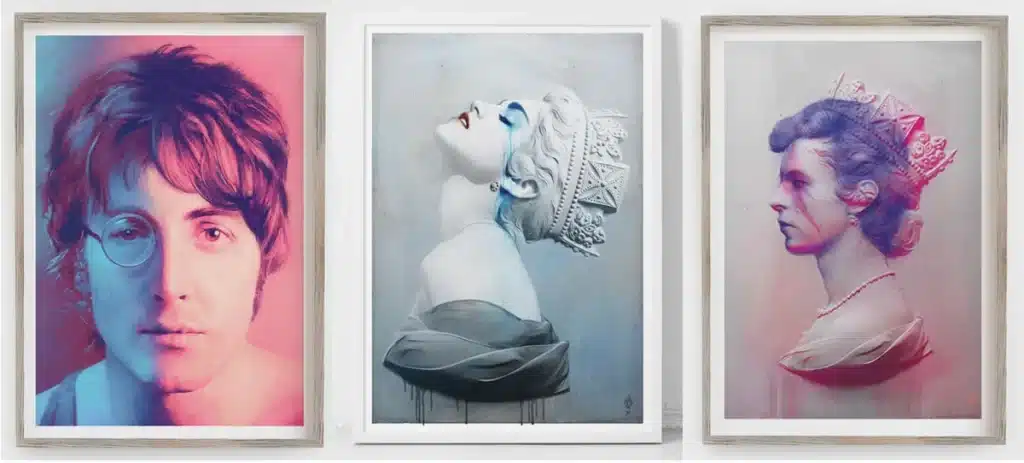
Digital art printing is turning your digital designs into physical prints. This method lets artists bring their artwork to life on canvas, paper, fabric, and metal. One benefit of digital printing is its ability to match the original artwork closely, capturing all the fine details and vibrant colors.
Imagine you've just finished a digital drawing you're really proud of. Instead of leaving it on your screen, you print it and hang it on your wall—or even sell it at a local art fair. That’s the power of digital art printing: it turns your digital work into something real you can share, display, or sell.
When it comes to printing digital art, choosing the right technique at your local print shop can elevate your work and ensure it reaches its full potential. Each method offers unique benefits tailored to different needs, from fabric prints to fine art reproductions. Let's check out various techniques.
Direct-to-Garment (DTG) printing is a game-changer for fabric-based artwork. This inkjet-based technique prints directly onto garments, allowing for sharp, detailed designs with no setup costs per color.
Key Advantages:
Direct-to-Garment (DTG) Printing is the perfect choice for printing intricate designs on fabric with vibrant, long-lasting results, making your artwork pop on clothing.
Giclée Printing is the top choice for fine art prints, offering unparalleled high quality and longevity. Giclée uses inkjet technology with archival-quality inks to produce high-resolution prints that are vivid and long-lasting, perfect for artists selling limited or open editions.
Key Advantages:
Giclée Printing is the go-to for fine art prints, delivering rich colors and exceptional detail, ideal for creating lasting masterpieces on canvas prints or fine art paper.
Screen printing may be older, but it’s still a powerful technique for certain styles. It’s known for bold, vibrant prints, especially on unconventional surfaces. While it’s great for large runs, the initial setup costs can be higher, but once that’s done, it’s cost-effective for big orders.
Key Advantages:
Screen Printing is a classic technique that brings bold, eye-catching prints to life, especially for larger runs or when you want your designs to stand out.
Both Laser and Inkjet printing are standard, but offer different advantages based on your project. Laser printing is fast and durable, while inkjet printing excels in color control and fine detail.
Laser Printing benefits:
Inkjet Printing benefits:
Laser and Inkjet Printing are efficient options that balance speed and precision, ensuring your prints come out crisp and accurate, whether you’re doing bulk work or intricate art.
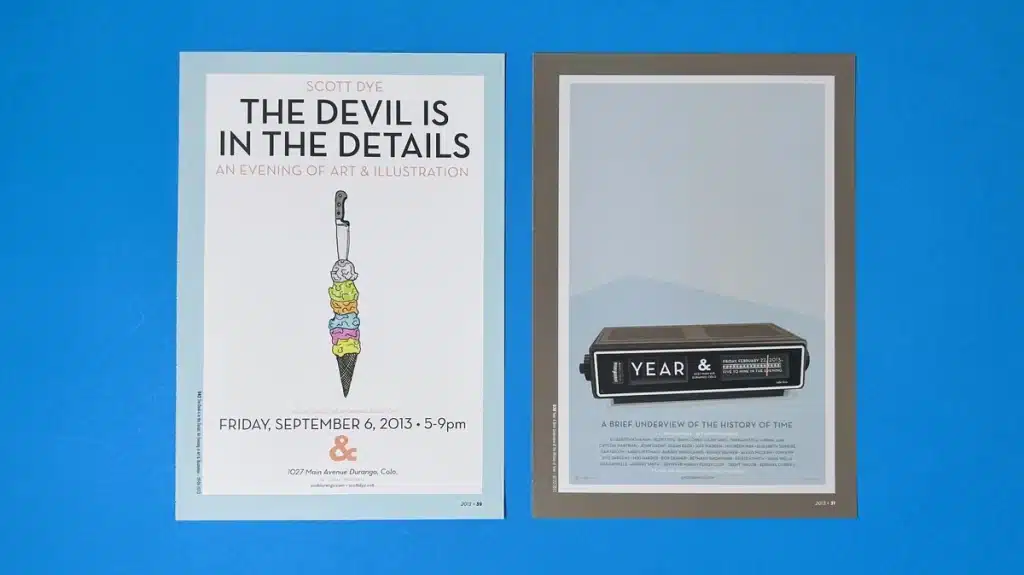
Printing your digital art doesn't have to be a daunting task. By following this step-by-step approach, you can create stunning prints that do justice to your art.
Before you send your art to print, ensure your digital files are optimized for the highest quality output, including the number of pixels to enhance resolution for a printed image. For this, you must:
For fine art prints, 300 dpi (dots per inch) is the best dpi for printing digital art. It ensures your print looks crisp and professional, especially if you’re working with larger formats or gallery-style prints. While images at 72 dpi work for small prints, increasing the resolution gives your art the sharpness it deserves when displayed, as long as you have the proper resolution.
To change resolution in software like Photoshop or Sketchbook Pro, follow these easy steps:
Your art’s colors may shift when changing resolution, so it's essential to check and tweak the color palette after adjusting the resolution. Keep a note of your original colors in Photoshop for reference to bring back that perfect tone.
If you’re printing posters, banners, or any large-scale art, it’s worth using professional resizing plug-ins like Perfect Resize or Blow Up. These tools maintain quality when enlarging your artwork, providing a seamless experience without pixelation.
Adjusting contrast enhances the vibrancy and sharpness of your artwork. Depending on your photo-editing software, you’ll find a slider for contrast adjustments. Increasing contrast subtly can make your art pop, especially when printing. Just be cautious not to overdo it.
Sharpening can make a significant difference in Photoshop. Duplicate your art layer, apply High Pass from the Filter menu, and adjust the opacity for a crisp finish. This sharpens edges without compromising the resolution, ensuring your work appears clean and detailed when printed.
After making adjustments, save your artwork in a JPEG or TIFF format for the best print quality. While JPEG is a widely used format, remember to keep it multiple times, as quality can degrade with each save. On the contrary, TIFF files are ideal if you want to maintain the integrity of your artwork even after repeated edits.
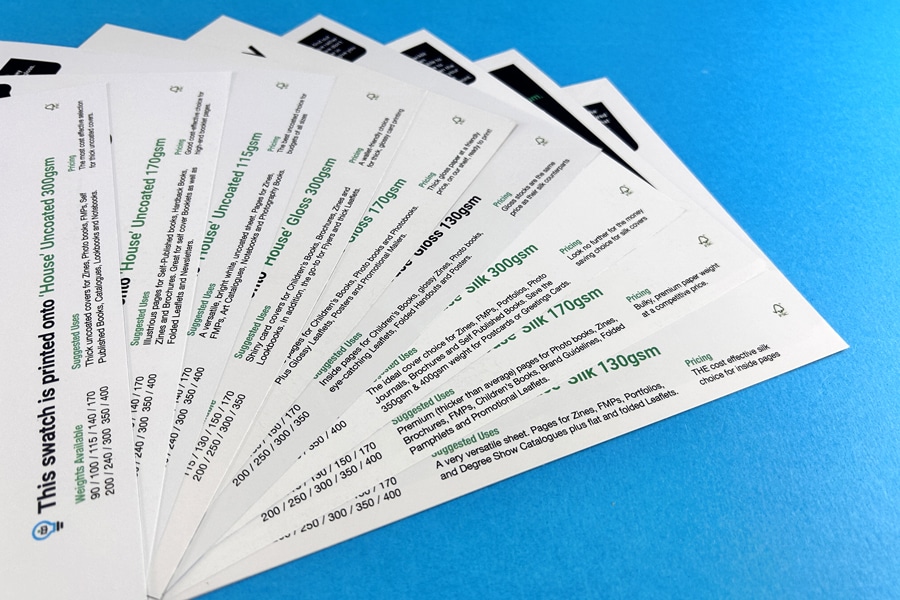
The perfect paper and ink can make or break the print's appearance. Here’s what you need to know:
For high-impact colors, dye-based inks are the way to go. These inks dry quickly and work exceptionally well with glossy paper, delivering brilliant results. However, they may fade faster (within 5 years) and are not waterproof.
Pigment-based inks are your best choice for prints that will stand the test of time. These inks offer longevity, lasting up to 150 years, and work best with matte papers. While the colors may not be as vibrant as dye-based inks, the trade-off is more than worth it for the longevity of your prints.
Your print’s paper quality plays a pivotal role in how it looks and lasts. Opt for acid-free, archival-grade paper to ensure your artwork stands the test of time. Papers made from 100% cotton or rag are ideal, as they provide a premium feel and prevent yellowing or degradation over time.
Consider the finish that suits your artwork:
At ExWhyZed, we offer various paper types suitable for your printing needs. These include gloss papers, silk papers, uncoated papers, as well as recycled papers. Want to know the overall cost you'll have to pay for your next project while using these papers? Request a quote from us now!
If you want your print to feel premium, go for heavier paper (around 20–24# for regular prints and 50# or higher for posters or gallery prints). Heavier paper adds a refined, luxurious touch to your artwork and ensures durability.
A Print-on-Demand (POD) service might be a wise choice if you're starting or working with a limited budget. POD companies can provide high-quality prints without investing in expensive equipment. You’ll also have more flexibility regarding order quantities, and the prints will still match professional standards.
For slightly larger print runs or when you want a more tailored approach, digital printing is an excellent next step. It’s fast, cost-effective, and ideal for small to medium book and booklet runs—perfect for up to 700 copies. At Ex Why Zed, we use the industry-leading HP Indigo press to deliver sharp, professional results.
To get the best outcome, it’s important to optimize your artwork before sending it over. Whether you're a seasoned designer or just getting started, our team is here to guide you via email, phone, or live chat. This guide will help simplify the overall process.
After mastering the art of printing digital art, breaking into the art market might be your next venture. To ensure success, follow the steps below:
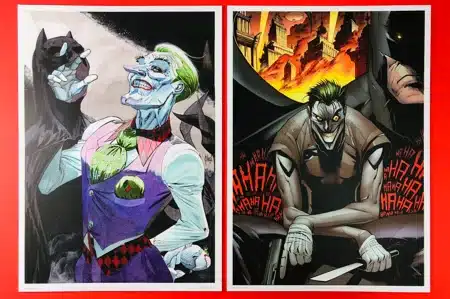
Ex Why Zed offers premium digital art printing services designed to elevate your artwork. With cutting-edge technology, we ensure vibrant colors, fine details, and top-notch precision, transforming your digital designs into high-quality prints.
Whether you're selling prints at conventions or simply showcasing your work, ExWhyZed guarantees exceptional quality and quick turnaround. Our reliable service allows your art to transcend the digital space, making it ready to shine in any home, gallery, or business space. Contact us today to make a difference!
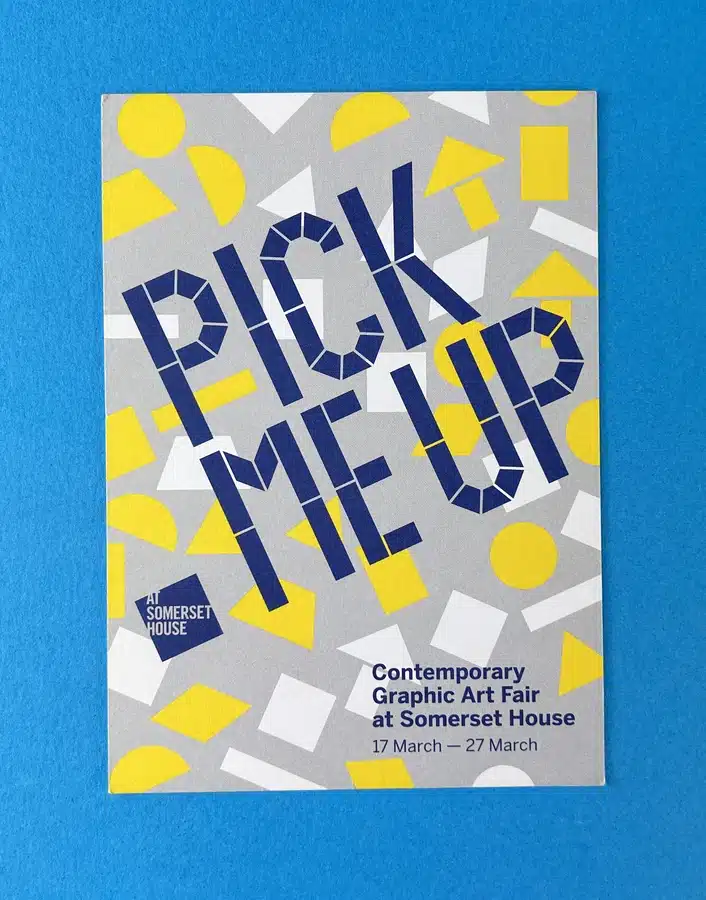
Digital art printing bridges the gap between virtual creativity and physical expression. It transforms digital designs into tangible pieces that can be experienced in ways screens can't replicate. Each process step offers valuable insight and satisfaction, from selecting the right software and color profiles to understanding printing techniques and choosing the best printer.
Furthermore, venturing into the world of printed art opens up exciting opportunities in the art market. With this guide, you’re ready to navigate the process with confidence. While it may seem challenging at first, with practice and patience, you'll soon master it and take your digital artistry to new, exciting heights.
High-resolution JPEG and TIFF are generally recommended formats for printing digital artwork. While TIFF files might take up more storage space, they retain high-quality vector images, becoming ideal for professional-grade prints. However, JPEG works well for more straightforward prints and smaller sizes.
You should understand the nuances of different printing techniques, including acceptable art printing methods, and the most suitable materials. For example, DTG Printing is great for textiles, and Giclée Printing works well on fine paper or canvas. At the same time, laser and inkjet printing are suitable for high-resolution outcomes on regular paper.
While it's technically possible to print digital art at home, it's recommended that you use a local printer or request a test print from a professional printing service for your digital art printing needs. A professional service can easily deliver high-quality, color-accurate prints, offer advice on materials and finishes, and provide a range of more sophisticated options for a professional-grade finish.
Different printing techniques have varying costs. While DTG and Inkjet printing offer cost-effectiveness and flexibility for lower volumes, Screen Printing becomes economical for large print runs. However, considering the costs associated with buying printing equipment, using a print-on-demand service can be more cost-effective.
To protect the copyright of your artwork, consider registering it with a copyright office. Additionally, using watermarks on online images, keeping low-resolution samples online, and creating limited edition prints can thwart unauthorized reproductions. Consulting with a legal professional may provide additional measures tailored to your situation.
Have you ever felt overwhelmed trying to turn your digital artwork into stunning physical prints? It's easy to get lost in the technical maze of file formats, paper types, and print methods. However, printing your art doesn’t have to be intimidating—it just needs a clear, smart plan.
Whether you're an illustrator selling on Etsy, a designer prepping for a gallery show, or simply wanting to frame your favorite piece, the steps to getting it right are more accessible than you think.
In this blog, we’ll explain the entire process—from preparing your files to picking the best print method. Get a step-by-step guide to ensure your digital art looks as good on paper as on screen. Ready to bring your creations to life? Let’s take that first step together.

Art prints are often misunderstood or mistaken for posters or basic reproductions. But they’re a powerful way to share your creativity without sacrificing quality. Numerous benefits of art prints include:
Overall, art prints offer fabulous opportunities. For creators, they open new doors. For buyers, they bring inspiration home.
The key difference between art prints and originals is exclusivity vs. accessibility. Have a look at the table below to learn how they differ.
Aspect | Original Art | Art Prints |
|---|---|---|
Uniqueness | One-of-a-kind, directly created by the artist | Reproductions made in multiples |
Price | Expensive due to time and exclusivity | Budget-friendly, accessible to a wider audience |
Collectibility | Highly collectible, often increasing in value | Less collectible but still holds value |
While original art carries prestige, prints make art ownership more inclusive. For artists, they offer a scalable income stream without sacrificing creative value.
Creating prints of your art involves a series of important steps to work on. Let's quickly have a look at these steps.

Before printing, you must bring your physical art into a digital format in the digital world. You have two solid options: scanning or photographing, and the right one depends on your artwork’s size, texture, and detail.
Scanning is your best bet for flat, smaller pieces. Set your scanner to at least 300 DPI and save the file as a PNG to retain detail. Use editing software to crop and fine-tune color, contrast, and clarity so your digital version feels true to the original.
For larger, textured, or 3D artwork, opt for photography. Use soft, indirect natural light, align your piece squarely with the lens, and stabilize your camera. A DSLR or modern smartphone with manual settings works great. After shooting, refine the image in Photoshop or a similar tool to make it print-ready.
Preparing your digital file for printing is critical to ensuring professional-quality prints. Before you hit "print," make sure your file is sharp and clean. Set your resolution to at least 300 DPI to preserve your artwork's crispness and fine detail.
Additionally, color accuracy can make or break your print. Switch to CMYK color mode while editing to ensure your edits stay within the printable color range.
When saving, choose PNG over JPEG to prevent quality loss. Once uploaded, double-check your work, and you are ready to go.
The material you choose to create prints, such as printing on art paper types and watercolor paper, significantly impacts the visual and tactile experience of your art. Each material offers a texture, weight, and finish, affecting how your art is perceived and enjoyed.
Depending on the visual and atmospheric effect you want with your artwork, you might want to consider canvas, metal, or poster materials for printing, as some options can help minimize glare. Here’s a closer look at their traits:
Canvas Print | Metal Print | Poster Print |
Textured, three-dimensional appearance, ideal for painting reproductions | Modern, sleek look with vibrant colors and a sense of depth | Classic style, available in matte and glossy finishes |
Durable and resistant to fading | Durable, waterproof, scratch-resistant, suited for indoor and outdoor display | High-quality paper ensures longevity and fade resistance |
Can be stretched over frames or traditionally framed | Lightweight, easy to hang, no need for heavy-duty mounting hardware | Versatile in display options depending on the chosen finish |
To stay aligned with current market trends, no matter which material you’re working with, it’s helpful to connect with a specialist team at ExWhyZed and share your requirements. Our dedicated expert team will not only review your request but also offer practical suggestions and resources to get started. Plus, we will help you bring your art prints to life while keeping your budget in check. Need an estimate? Simply request a quote to begin.
Choosing the right frame for your art print isn't just a design choice; it's integral to creating the overall appeal. While canvas prints can be effectively stretched over frames for a gallery-style presentation, different frames suit posters better, enhancing the color and subject matter of the artwork. A well-chosen frame harmonizes with the environment, ensures the artwork remains the centerpiece, and increases the piece's perceived value.
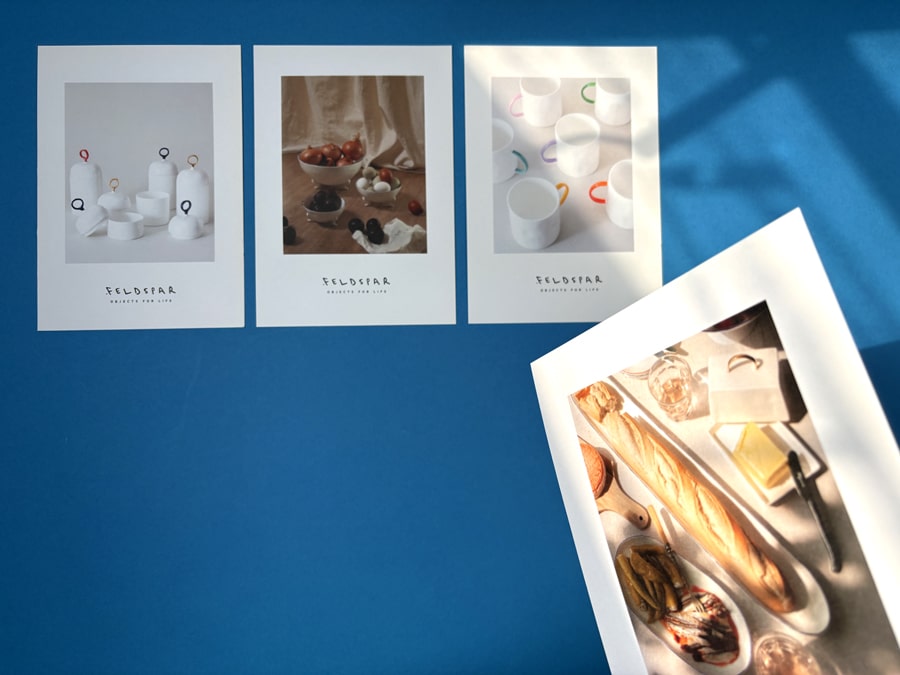
If you're serious about delivering gallery-worthy art prints, working with a dedicated print-on-demand company like Ex Why Zed is a smart move. Known for attention to detail and artist-first approach, ExWhyZed ensures each print reflects the care and quality your work deserves.
Whether you're producing limited edition runs or building a global customer base, we handle the production and fulfillment, so you can stay focused on creating. With reliable turnaround times, archival-grade materials, and a commitment to quality, ExWhyZed helps independent artists maintain consistency, credibility, and customer satisfaction, one print at a time. Also, no more worries about shipping as we send print everywhere globally!
Before listing your art prints for sale, make sure to order samples. This essential step lets you check how your artwork looks realistically, ensuring the colors, details, and finish match your expectations.
With sample orders at reduced prices, it's affordable to ensure everything is perfect. Plus, having physical prints allows you to create authentic marketing content, such as styled photoshoots or showcasing them in home settings—great for social media and your online store.
Besides, ordering samples helps you maintain quality control and ensures your customers receive precisely what you envision.
It's time to take real action. Marketing your art online is all about connecting with the right people. Use platforms like Instagram, Pinterest, Facebook, and TikTok to showcase your work, but make sure to engage with your followers—share behind-the-scenes moments and stories that build a connection.
An email list is essential for updating your audience on new releases or special offers. Also, ensure your online store reflects your brand with quality photos and detailed descriptions.
Local collaborations, gallery shows, and art community forums can expand your reach beyond the digital world. If you’re looking for faster visibility, try paid ads on Facebook or Instagram to target your ideal audience.
Ultimately, focus on starting conversations and building relationships—this will boost both your visibility and sales.
If you want to simplify getting your art prints into customers' hands, partnering with a trusted print-on-demand service like Ex Why Zed can make all the difference. With our high-quality printing and efficient order handling, you can focus on what you do best—creating art—while we care for the rest.
This allows you to grow your business, ensuring your work reaches a wider audience with minimal effort. Whether you're just starting or looking to expand, we offer a smooth, reliable solution for artists in the USA. So, without waiting any further, contact us now!
Creating art prints isn’t just about duplicating your work—it’s about giving your creativity a second life. Whether you're starting or looking to grow your art business, this journey offers more than extra income.
It’s a chance to connect with people who truly resonate with what you create. With a thoughtful approach—digitizing your art well, prepping your files right, partnering with the right print platform, and putting your work out there—you’re setting yourself up for more than sales. You’re building a presence.
So take your time, stay true to your style, and let your work speak for itself on every wall it lands on.
Ensuring the best quality of your art prints involves several steps. Digitize your artwork accurately using a scanner or a camera for capturing a digital image, and edit it appropriately with software like Adobe Photoshop. Based on the artwork's style, select the right materials for printing, choose a trustworthy printing company or print shop, and maintain continuous quality control through sampling and proofing. Make sure to consider the resolution of your scans in terms of dots per inch for the best results.
Effective marketing strategies for selling art prints online include lavish use of social media platforms like Instagram, Facebook, and Pinterest. Paid advertising, SEO optimization, email marketing campaigns, and collaborating with other artists or influencers can greatly expand your reach. Networking at art fairs and community events also aids in marketing efforts.
Home printers may seem convenient, but may not yield the best results for fine art prints. High-quality inkjet printers, like Epson models, with at least a six-colour system, are advisable for producing your own prints of professional-grade quality. Alternatively, collaborating with a reliable print-on-demand provider can assure quality while easing logistical hassles.
The best printing method depends on your artwork's style, desired texture and finish, and the volume of prints. Giclée prints using archival ink and inkjet printing deliver high-quality reproductions for digital art and photography. Screen printing is excellent for high-volume orders, while lithography suits original printmaking for limited editions.
Art transcends boundaries, and an art book is its most profound expression. At Ex Why Zed, we specialise in transforming your artistic visions into beautifully crafted art book printing that captivate and inspire. Whether you're an artist, gallery owner, curator, or enthusiast, our expertise in art book printing ensures your work is presented in the most compelling way.
An art book is more than a collection of images; it's a curated experience that immerses the reader in your creative world. It provides context, tells a story, and offers a tangible connection between the artwork and the viewer. From detailed imagery to insightful narratives, artist catalogue printing serves as a timeless keepsake of your creativity.
Art galleries and exhibitions often require high-quality printed materials to enhance the visitor experience and extend the impact of the artwork beyond the gallery walls. Here are some popular publications we produce:
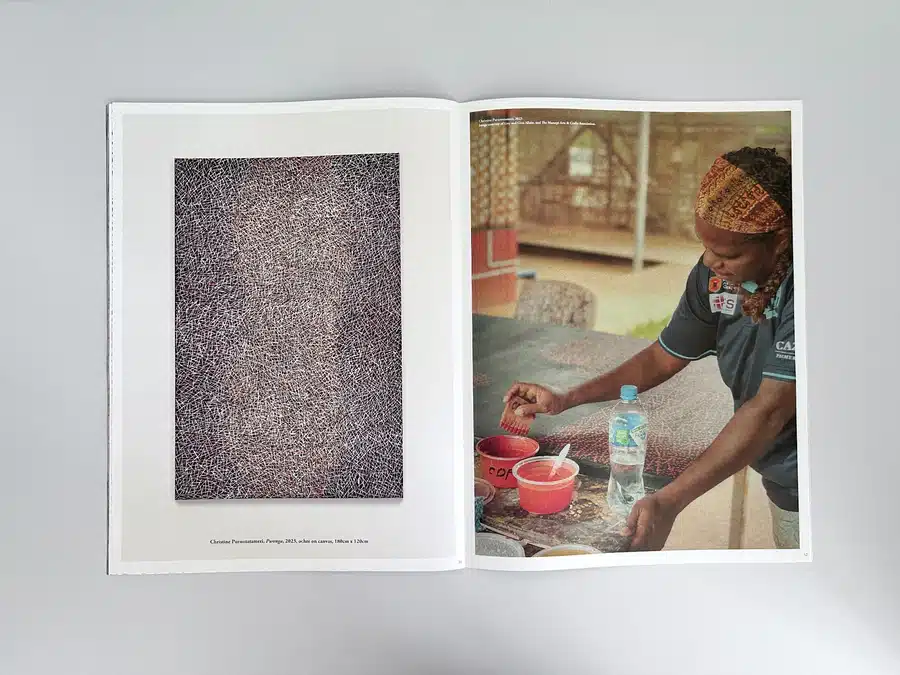
Dive into the captivating world of "Yoi," a stellar exhibition catalogue we crafted for JGM Gallery. This large-format booklet showcases the enchanting artworks of the Munupi Arts and Crafts Association, reflecting the cultural heartbeat of the Tiwi people.
This is the next in an expanding range of almost A3 booklet printing, we have completed as art gallery catalogues for JGM. Here is another case study for Tiwi Artistry: Large Format Booklet Printing – Showcasing Tiwi Artistry at JGM Gallery
Design Highlights:
Actionable Insights:
Imagine visitors at your exhibition holding a beautifully designed catalogue, feeling the texture of the pages, and absorbing the vibrant images and stories. These tangible keepsakes not only enhance the experience during the event but also serve as lasting reminders of your work in their homes and offices. Art books allow your audience to revisit and rediscover your art, deepening their connection over time.
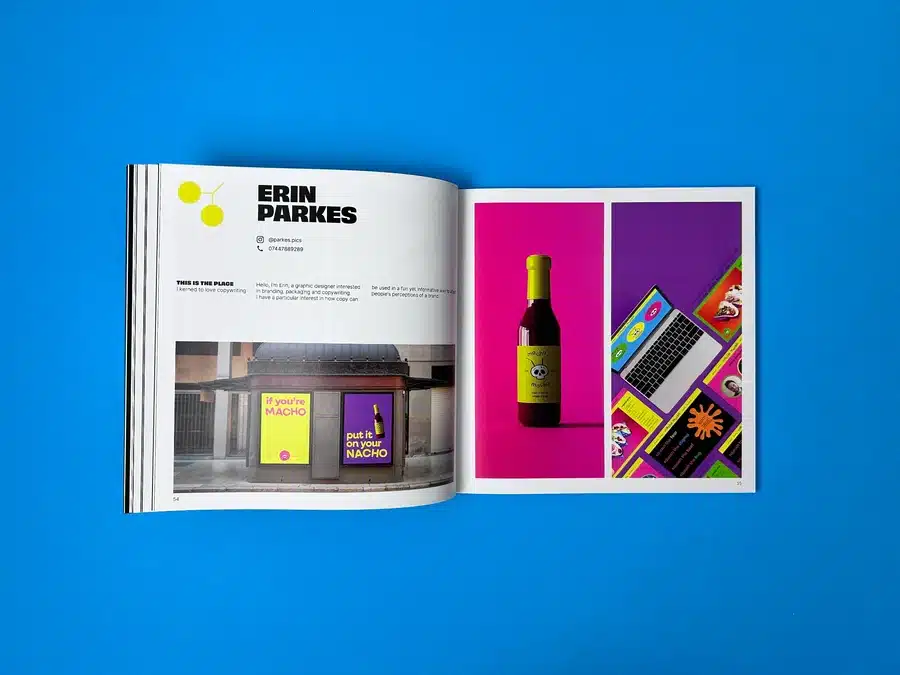
The "This Is The Place" degree show catalogue for Manchester School of Art exemplifies how printed materials can showcase emerging talent.
Design Highlights:
Actionable Insights:
We understand that every project is unique, and several factors influence the cost of printing your art book:
We work closely with you to balance your vision with your budget, providing detailed quotes and options to make informed decisions.
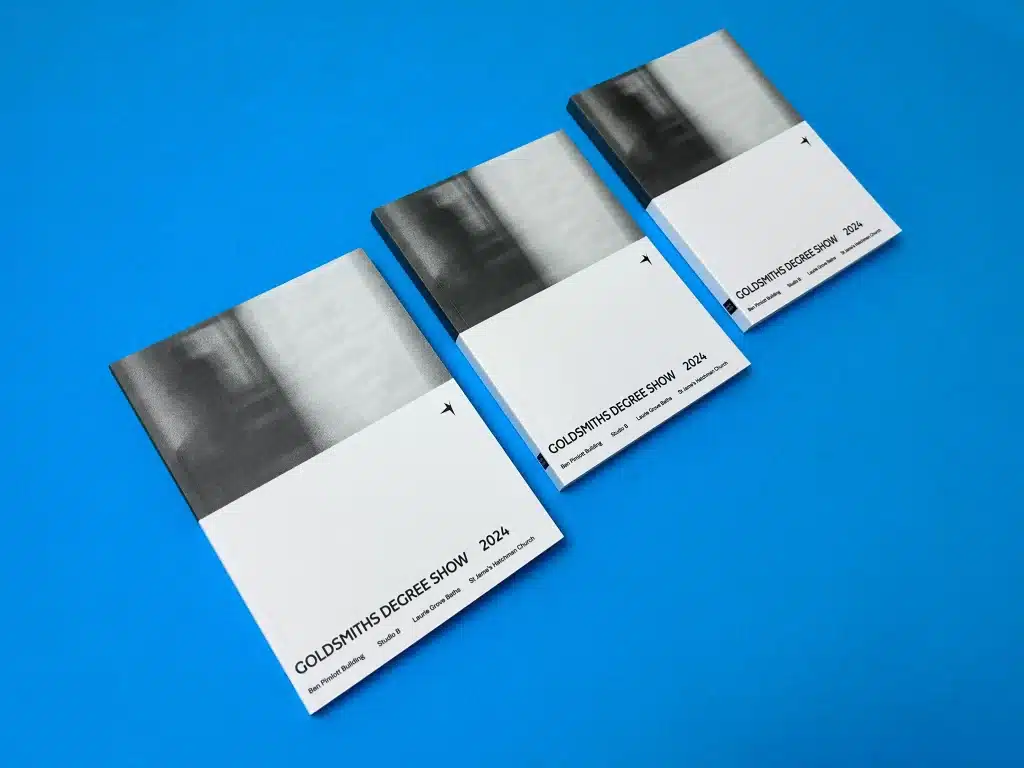
For the "Goldsmiths Fine Art Catalogue 2024," we collaborated with the university to manage costs effectively while achieving a premium look and feel.
Design Highlights:
Actionable Insights:
Our commitment to excellence goes beyond printing; it's about providing a seamless and enriching experience:
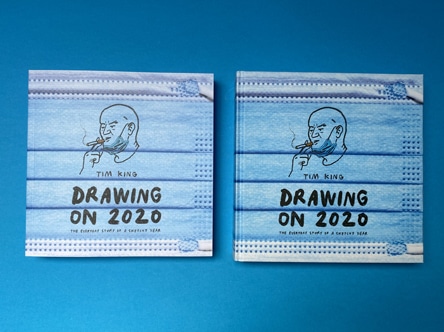
We helped Tim King bring his ambitious project to life by printing both softback and hardback editions of "Drawing on 2020."
Design Highlights:
Project Highlights:
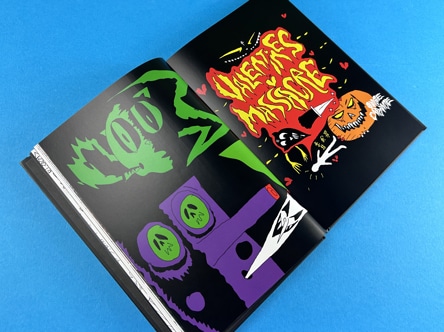
Partnering with multi-disciplinary artist Onoe Caponoe, we produced his hardback art book "Who Am I?" with precision and care.
Design Highlights:
Project Highlights:
In a digital age, physical art books offer irreplaceable value:
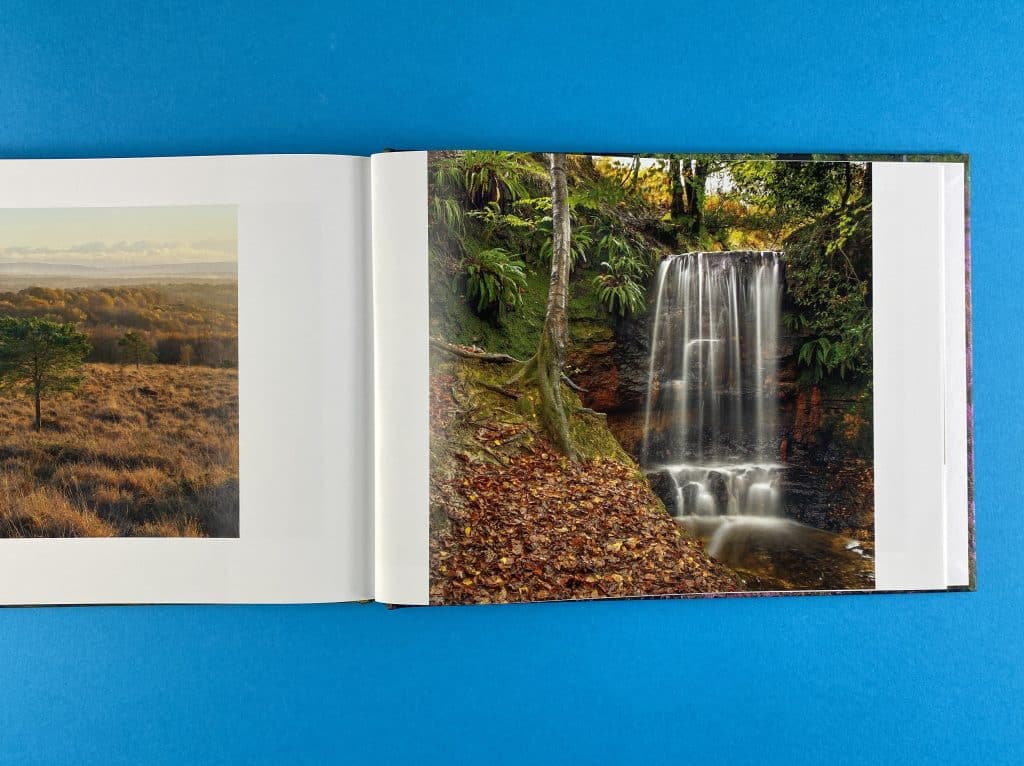
The coffee table book "Through The Seasons on Ashdown Forest" by Craig Payne and James Adler is a perfect example of the enduring appeal of printed art books.
Design Highlights:
Project Highlights:
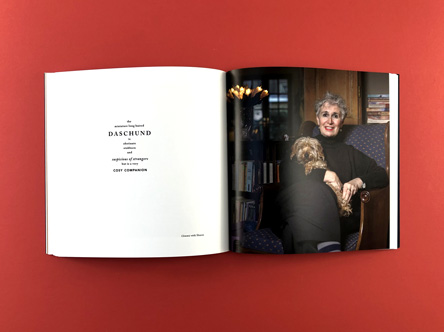
Anne Clements chose our services for her charming book "In The Dog's House," a 21st-century portrait of contemporary tastes in canine companions.
Design Highlights:
Project Highlights:
Join the Print Renaissance
There's a resurgence in the appreciation for printed art. While postcards and PDFs have their place, they often serve as fleeting interactions. An art book is a lasting testament to your work's significance—a piece that your audience can hold, explore, and treasure.
We offer a range of printing options to suit your needs:
Ready to Bring Your Art Book to Life?
Contact Ex Why Zed today to discuss your project. Let's collaborate to create a publication that not only meets but exceeds your expectations.
Choosing the right art print size can be tricky. A piece that's too small may go unnoticed, while an oversized one can overpower a space, leaving both artists and buyers frustrated.
For buyers, it can be hard to decide what size works best. Figuring out how it fits with your décor, understanding aspect ratios, and factoring in framing costs can feel overwhelming.
But don't worry—this blog will guide you through everything you need to know about print sizes, helping you choose one that fits perfectly and enhances your space. Let's make art simple and stunning!
Alt text: So Young Magazine Printing: A Confluence of Music, Art, and Exceptional Print Quality
Art prints come in various sizes to suit different tastes and needs. Starting from around 4” x 6”, small prints work well as intimate pieces, perfect for cosy corners or as part of a gallery wall.
Medium-sized prints, up to 11” x 14”, provide more visual impact while still being adaptable to various settings. Large prints, typically from 20” x 30”, make bold, attention-grabbing statement pieces in spacious environments. By offering a range of sizes for image options, understanding these dimensions and choosing the right size for different artwork types is key to their aesthetic appeal and commercial success.
For those looking to make a bigger impression, A2 poster printing (420mm x 594mm) is a popular choice, offering a versatile size ideal for displaying impactful artwork without overwhelming the space.
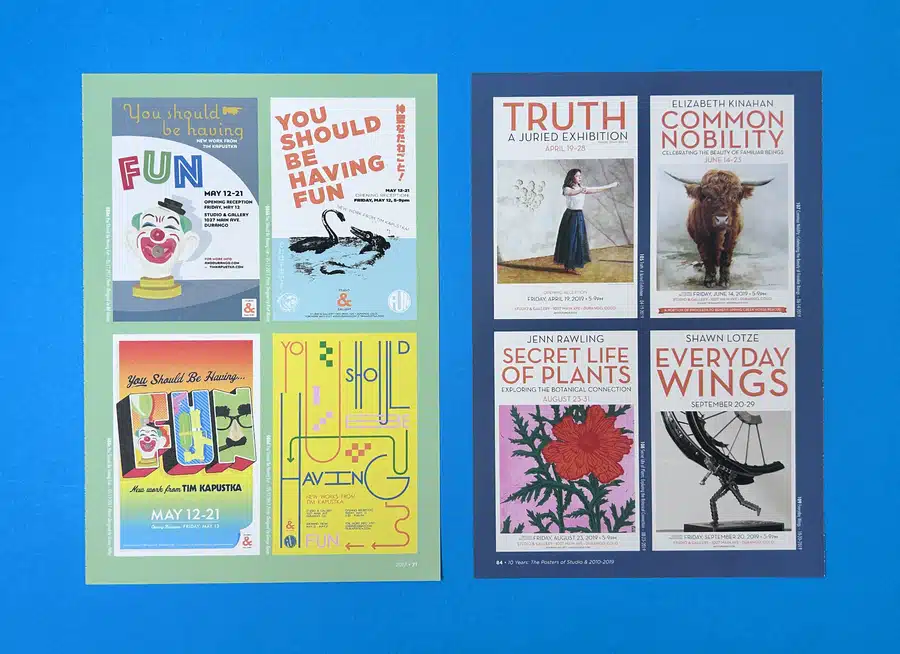
Small, medium, and large art prints offer different options. Small prints, starting at 4” x 6”, are similar to postcard size and work well in personal spaces like bookshelves or grouped with other pieces on larger walls.
Medium prints, up to 11” x 14”, balance impact and versatility, making them ideal for living rooms, above dressers, or in office corridors.
Large prints, starting around 20” x 30”, are made to stand out. They showcase intricate details and create a strong visual experience, perfect for bigger rooms or statement walls. Understanding the differences between these sizes and where they fit best helps artists and sellers appeal to a broader audience with varying design needs.
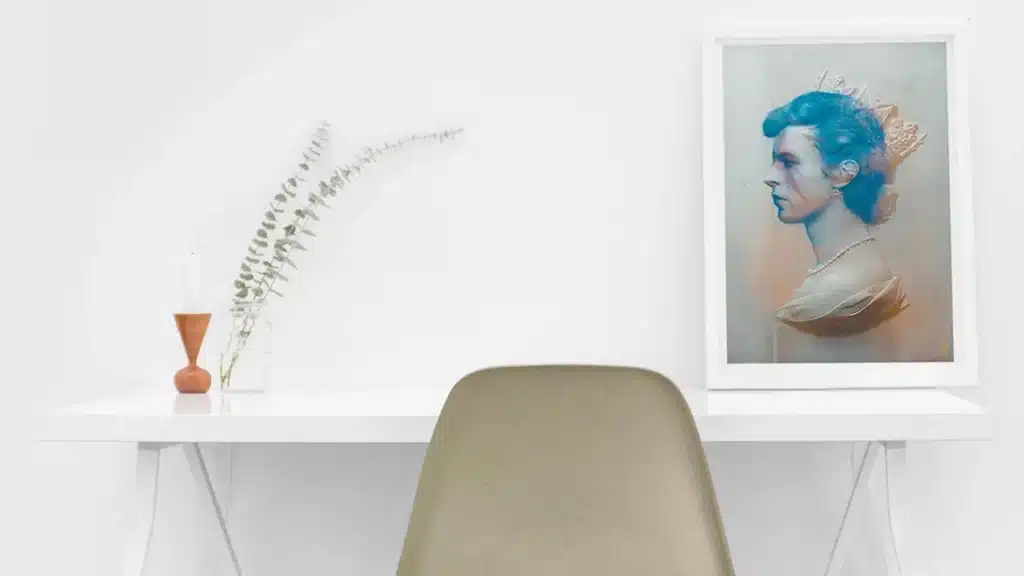
Standard sizes are generally agreed-upon dimensions used by artists, galleries, and printers, including various paper sizes. You might notice these best sizes when buying frames or mats for your art gallery walls. They are practical, as custom-fitting for unusual sizes can hike prices and make it harder to accommodate in common spaces. Some of the popular standard art print sizes include:
| Size (Inches) | Ideal Settings |
| 5 x 7 | Perfect for intimate displays on bedside tables or bookshelves. |
| 8 x 10 | Fits well in living rooms, above dressers, or in office spaces. |
| 11 x 14 | Suitable for larger areas such as homes, offices, and galleries. |
| 16 x 20 | Ideal for making impactful pieces in spacious rooms. |
| 18 x 24 | Commonly used for bold wall art in homes and galleries. |
| 20 x 30 | Great for dramatic displays, serving as the focal point of a room. |
These art print sizes offer a great starting point for artists and sellers. They fit into standard frames, cater to common space dimensions, and can be scaled according to customers' preferences, allowing a wider audience to enjoy them. Maintaining these standardised sizes is crucial in ensuring art prints find their place in varied settings without much hassle. It eases the framing process and optimises the print quality.
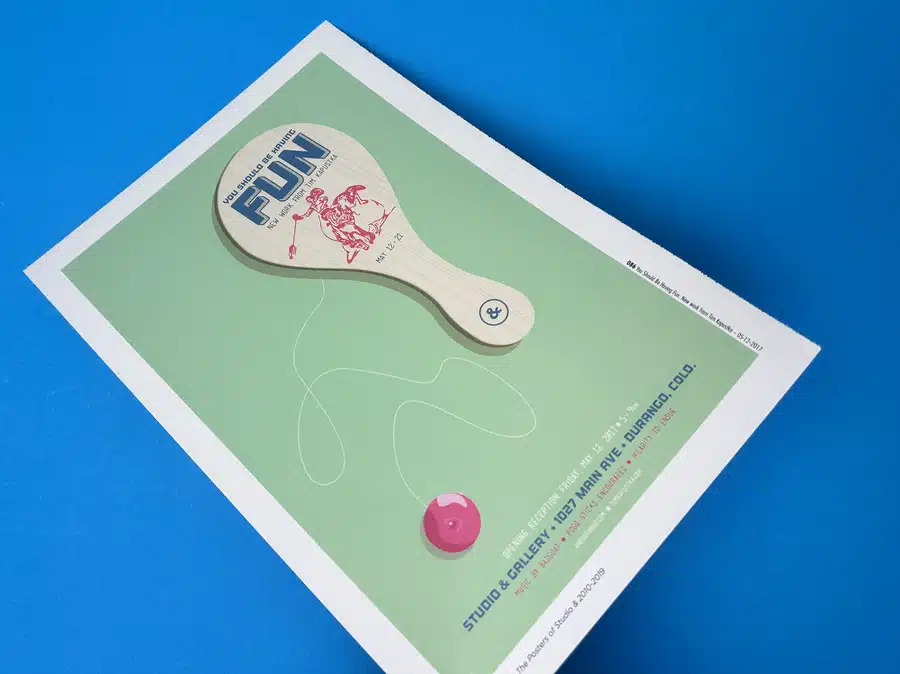
Certain print sizes, including common sizes such as 8x10 inches, 11x14 inches, and 18x24 inches, stand out due to their versatility and the availability of standard frames. They offer a range of visual impact that works well in homes, offices, and galleries. Review these sizes, reviewing their benefits, ideal placements, and typical price points.
Smaller prints, such as 5” x 7”, 6” x 8”, and 8” x 10”, are popular for their charm and flexibility. They are often chosen for capturing intimate moments like portraits, close-up details, or personal artistic expressions. Their compact size makes them perfect for small spaces such as desks, bookshelves, or as part of a gallery wall.
| Size (Inches) | Advantages | Ideal Settings |
| 5 x 7 | Affordable, captures intimate moments | Perfect for bedside tables, bookshelves, or grouped with other artworks. |
| 6 x 8 | More room to showcase work without overwhelming a space. | Fits well on end tables or mantelpieces or as part of a larger wall collage. |
| 8 x 10 | A broader canvas without requiring much wall space. | Ideal for walls, above dressers, or even in dining spaces. |
These small art sizes typically command a lower price range due to their dimensions, making them accessible for those with limited wall space or tighter budgets.
Medium-sized fine art prints strike an attractive balance between size and versatility. Measurements of 8” x 12”, 10” x 10”, and 11” x 14” are commonly sought after.
| Size (Inches) | Advantages | Ideal Settings |
| 8 x 12 | Favoured for landscapes and panoramic shots. | Suitable for living room feature walls or office corridors. |
| 10 x 10 | Offers a sense of balance, favoured for abstracts and contemporary art. | Exquisite for gallery walls or shared workspaces. |
| 11 x 14 | Provides ample space for detailed work. | Beautiful in bedrooms or professional offices. |
These prints are neither too large nor too small and can seamlessly fit into diverse settings, ranging from homes to offices.
Large prints excel at capturing attention. They offer a larger canvas for intricate details and strong visual experiences. Sizes often range from 18” x 24” to large square prints measuring 20” x 20”, up to even larger dimensions like 24” x 36”.
| Size (Inches) | Advantages | Ideal Settings |
| 18 x 24 | Suitable for intricate details and focal points. | Perfect for spacious bedrooms or galleries. |
| 20 x 20 | A harmonious blend of length and width. | Impressive in spacious living rooms or boardrooms. |
| 24 x 36 | Makes a strong visual statement. | Ideal for grand living spaces or star attractions of an exhibition. |
These large art print sizes are geared towards making a bold statement in driveways, meet-up spaces, and gallery halls.
Alt text: Artist Catalogue printing
In addition to size, the medium of a digital art print also plays a significant role in its overall impact and marketability. From traditional posters to innovative formats like canvas, aluminium, and acrylic prints, the choice of print type can significantly alter the appeal of an artwork. In this section, let's explore popular art print types that resonate with today's market trends.
Posters are a versatile and widely accessible form of fine art print. Often printed on paper, they provide an affordable way for art enthusiasts to incorporate high-quality artwork in their homes or offices. They can feature a wide spectrum of subjects, including classic artworks, modern designs, personalised quotes and more.
This combination of versatility, accessibility, and adaptability makes posters a widely popular choice among various art print types.
A2 poster printing (420mm x 594mm) is popular for those seeking something larger but not overwhelming. It provides a striking balance between size and impact, making it ideal for displaying bold designs or intricate artwork in home or office settings. Standard frame availability for A2 posters also adds to its appeal, making it a convenient and attractive choice.
Whilst not being a service we offer at Ex Why Zed, canvas prints can mimic the texture and look of traditional paintings, adding a touch of sophistication to any space. The process involves printing the image directly onto canvas material, which is then stretched and mounted onto a wooden frame. Perfect for showcasing art pieces in galleries and homes, Canvas prints offer several benefits:
Canvas prints, with their elevated aesthetic charm and longevity, make an alluring addition to any art collection, supplementing the overall appeal of an artwork.
Aluminium prints, also known as metal prints, are gaining popularity for their crisp, vibrant, and modern aesthetic. By infusing inks into specially coated aluminium sheets, aluminium prints offer vividly coloured and durable images. Suitable for both indoor and outdoor displays, they provide:
The appealing visuals, longevity, and modern look make aluminium prints a trendy choice among art print types.
You can also Check out Ex Why Zed's print portfolio.
Acrylic prints deliver a high-end, contemporary display option that enhances colours and depth. The image is printed on high-quality photographic paper and then encapsulated between acrylic glass sheets. Here are a few advantages:
With bold colours, striking depth, and an extravagant look, acrylic prints stand out in the print market.
For high-quality art print sizes and A2 poster printing, Ex Why Zed is your go-to solution. We offer many options, ensuring your artwork looks stunning in any size. Our services cater to personal and professional needs, whether you’re after small, medium, or large prints. Besides, our A2 poster printing perfectly balances size and impact for bold displays. You can get a quote for a2 poster here.
Understanding art print sizes is key to enhancing the artistic value, commercial success, and viewer reception of your work. The right size, medium, and display can create a harmonious visual experience, making your piece more appealing and impactful.
Whether you choose small, medium, or large prints, selecting the correct size can elevate your artwork. Pairing it with quality reproductions, proper framing, and thoughtful placement boosts its aesthetic and monetary value. Balancing artistic vision with market demands is crucial for artists and sellers’ success in the art world.
The size of your art prints largely depends on the nature of your artwork and your target market. When deciding on the print size, consider factors like the detail level of your work, the potential display settings, and your audience’s preferences.
While there isn't a definitive 'best' size, some commonly popular and sought-after sizes for art prints include 8”x10”, 11”x14”, and 18”x24”. These sizes offer versatility and fit well in various settings, making them a commonly preferred choice among buyers.
Understanding standard art print sizes can help streamline production, ensure better print quality, and simplify framing and displaying artwork. It also allows artists to cater to a broader audience by offering their work in sizes that are preferred and commonly sought after in the market.
Alt text: Poster for a social media influencer
Whether you're a graphic designer, a marketing professional, or someone working on your own project, understanding the specifics of paper sizes, such as A3, can significantly improve the quality of your output. Throughout this blog, we dig deep into the various aspects of A3 poster size, highlight common uses, review printing materials and techniques, and share necessary details about bleed and orientations.
We aim to resolve common queries that users often have regarding the A3 poster size. So, let's begin our journey to understand the world of A3 poster size.
A3 Paper Size is a standard defined by the International Standard ISO 216, and it is consistently used worldwide except in Canada, the USA, Mexico, and the Dominican Republic. This A series standard classifies paper into two series – A and B- while maintaining the same aspect ratio. In terms of dimensions, an A3 poster size measures 29.7 x 42 cm, 297 x 420 mm or 11.7 x 16.5 inches, making it widely used for posters, placemats, menus, and folded leaflets.
The dimensions of A3 paper can be represented in centimetres, millimetres, or inches. Here's a quick reference text table (including the bleed):
| Measurement | Size without Bleed | Size with Bleed |
| Centimetres (cm) | 29.7 x 42 cm | 30.3 x 42.6 cm |
| Millimetres (mm) | 297 x 420 mm | 303 x 426 mm |
| Inches | 11.7 x 16.5 inches | 11.9 x 16.8 inches |
When designing for print, you should create your artwork at a resolution of 300 DPI (dots per inch) to avoid any pixelation. At 300 DPI, an A3 artwork without bleed should be 3508 x 4961 pixels. However, with an additional 3mm bleed, your design should be 3579 x 5031 pixels.
A3 paper size is used in various applications due to its convenient dimensions and adequate space for detailing. The most common uses include designing impressive posters, placemats, leaflets, and menus. This size is also favoured for architectural and technical drawings and marketing materials like brochures and flyers. Businesses leverage A3-size paper for creating eye-catching indoor advertisements, which are ideal for corridors or hallways due to their perfect balance of visible area and compactness.
The A3 poster size provides a solid canvas for artists and designers. Artists often choose this size for artwork reproductions or original art pieces as it offers ample space for detailing without being cumbersome. In the graphic design world, A3 is preferred for detailed infographics, diagrams or design prototypes due to the balance between visibility and portability.
Regarding marketing materials, A3 poster size is a go-to choice for many. Its dimensions are large enough to capture attention yet small enough to place on counters, tables, and bulletin boards. Brochures, leaflets, and flyers printed on A3-size paper offer enough real estate to hold captivating designs, compelling CTAs, and relevant information that effectively promotes brand offerings.
For presentations and displays, the A3 poster size provides a visually appealing platform to share thorough details and complex graphics. Whether it's an educational presentation, trade show display, or a business proposal, A3 posters ensure your content stands out. Their portable size makes them an excellent choice for handouts or informational event giveaways.
The choice of techniques and materials can significantly impact the final product in A3 poster printing. The commonly adopted printing methods include Digital Printing and Offset Printing, each boasting advantages. The selection of paper material, including Gloss, Matte, and Uncoated Paper, is crucial in boosting the posters’ aesthetic appeal while aligning with their purpose. Let's discuss these methods and materials in detail.
Digital Printing is a fast, flexible, and cost-effective method for printing A3 posters. Here are some key features:
Offset Printing provides high-resolution prints on a large scale, making it perfect for bulk A3 poster printing. Its defining features include:
The choice of material heavily influences the look and feel of your A3 posters. Options include:
Designing an impressive A3 poster requires a wise choice of orientation and a thorough understanding of bleed. Depending on the design direction and context of use, one might choose between Portrait and Landscape orientations. Bleed, on the other hand, refers to an extra 3mm of space around the design, ensuring no unwanted white borders around your poster after trimming. This allows elements of your design to reach right to the edge of the paper.
The orientation of the A3 poster should align with the intended purpose and content orientation. Portrait orientation, longer than it's wide, is ideal for displaying detailed content, allowing easy readability. It works well for menus, informational posters, and technical diagrams. Conversely, wider than long landscape orientation works better for expansive graphics or panoramic views, making it a great fit for artwork reproductions, landscape photographs, or wide-format presentation slides.
Bleed is paramount in professional printing. It ensures that your backgrounds and images reach the edge of the page after the print is trimmed, eliminating any awkward white borders. A typically recommended bleed for A3 poster size is 3mm. Therefore, while designing your poster, adjust and extend your background or images to the bleed margins to avoid any unintentional cropping of your design during the cutting process.
You can check out Ex Why Zed for your digital printing solutions. Once you've decided on your preferred style and design, head to our Printed Project Builder to share your details. We have an amazing portfolio you can check out before deciding. Get a quote NOW.
In the digital age, A3 posters still pack a punch. They're the perfect mix of visibility and portability, making them versatile for marketing, artwork, or presentations.
Understanding the dimensions, bleed, and orientation is key to designing a standout poster. The right printing techniques and the series of paper used also make all the difference, so it's important to choose wisely.
With this knowledge, you can create impressive A3 posters that grab attention and leave a lasting impression. Let your creativity shine on the A3 canvas!
To ensure high-quality prints, maintain an image resolution of at least 300 dpi while resizing to A3 dimensions. You can resize your image without losing quality using professional image editing tools like Adobe Photoshop or Illustrator.
Common binding options for A3 posters include saddle stitching, perfect binding, or wiro-binding. The selection heavily depends on the number of pages, usage, and desired aesthetics.
A3 paper size, following the ISO 216 international standard, measures 297 x 420 millimetres, 29.7 x 42 centimetres or 11.7 x 16.5 inches. This makes it a versatile size for creating promotional materials or artistic prints.
In the UK, the most commonly used poster sizes follow the ISO 216 standard, including the popular A3 (297 x 420 mm), A2 (420 x 594 mm), and A1 (594 x 841 mm) sizes.